Click here to return to Blog Post Intro
Duane H. Cassidy, Retired General of the U.S. Air Force, flew with Searfoss’ father. He pointed out, “Rick has always been intense, focused, and driven, whether challenging his mother’s leadership at home or commanding a space shuttle mission. His intense focus is tempered by unflagging positivity and good humor.”
The Compelling Need for You to Lead
Searfoss explained, “For over a decade, I’ve engaged as a professional business speaker.” Then, he met Dr. Stephen R. Covey, author of The 7 Habits of Highly Effective People and worldwide-recognized thought leader. Expressing some concern to Dr. Covey, Searfoss admitted, “I’m a pretty technical guy, with my degrees in aero engineering and aeronautics [a specialized applied physics degree], so I’m worried about adapting to the business environment.” He looked at me a little quizzically, then replied, “You’ve got over twenty-five years of experience in what American businesses need more than anything else: leadership and teamwork. Share it!”
This book extends and expands on Searfoss’ personal mission of “sharing the leadership, teamwork, and innovation lessons of human spaceflight to launch organizations to higher heights of execution performance.” Searfoss issued a call to action, “Commit to lead for real results, with purpose and passion!”
Your “Flight Data File”
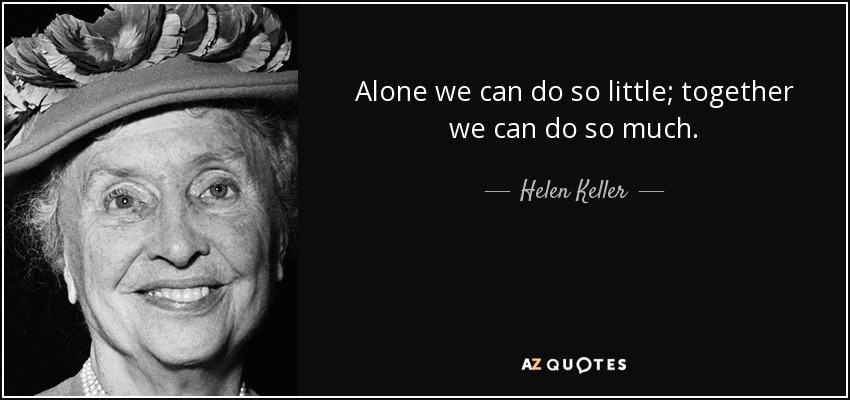
For a Space Shuttle mission, the Flight Data File (FDF) was the sum total of all the onboard documentation, comprised of checklists, manuals, cue cards, flipbooks, and laptop data.
For Purpose-Powered Leadership, Searfoss offers his 4P Leadership Model, which recognizes that, almost without exception, the necessary elements for success in any undertaking fall into these four divisions:
1. Purpose
2. People
3. Perspective
4. Program
This framework applies to individual performance, leadership, team structure, and execution activities. Leaders must address all the elements without neglecting any. To support this leadership model, Searfoss developed the PAPA Effective Execution System:
• Preparation
• Awareness
• Persistence
• Accountability
Searfoss takes us on a countdown of 12 Purposeful Performance Principles that fit into his 4P Leadership Model. Let’s explore those together:
4P #1 – Purpose: The Why
Purpose is the very essence of why we’re pursuing our venture in the first place.
All of the elements of defining purpose are important, but two action-oriented ones carry through from strategy to tactical execution most forcefully. First, the conscious act of choosing to do the most difficult things you can imagine in pursuit of your purpose induces action in and of itself. Second, coupling a “Choose the Hard” attitude with a purpose that makes a positive difference for others will define a meaningful mission. A “Mission that Matters” is always one of service.
Principle #12: Choose the Hard
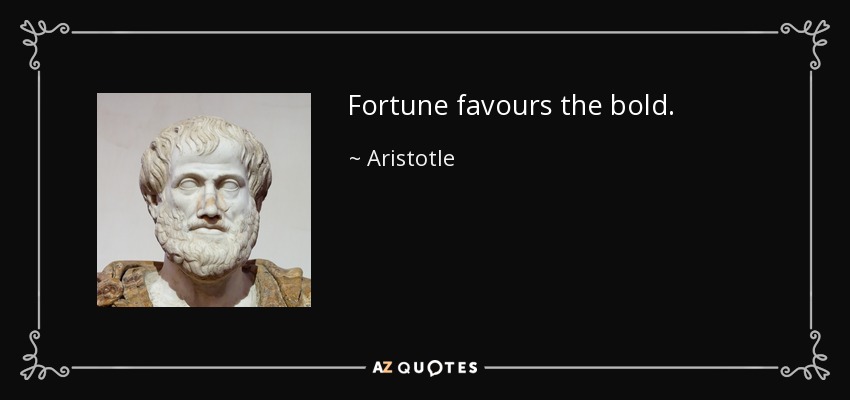
Purposeful Performance Principle 12: Actively seeking and embracing difficult challenges gives powerful initial direction, informs the vision, and encourages the team.
President Kennedy provided a bold goal—to put a man on the Moon by the end of the decade—along with uplifting rationale, “We choose to go to the moon in this decade and do the other things, not because they are easy, but because they are hard, because that goal will serve to organize and measure the best of our energies and skills, because that challenge is one that we are willing to accept.”
By its very nature, vision is a long-term consideration of a desired future state. It’s inherent in human nature to aspire to a better future state.
Short, focused, clear, and inspiring—all these qualities are important in articulating vision. Those who courageously Choose the Hard in their vision undoubtedly accomplish the most. The highest achievement end state requires the deepest commitment.
–CUE CARD– CHOOSE THE HARD
Result: Choosing the Hard produces a powerful start, informs the vision, and sets the team up for greater achievement.
Team Benefit: Accepting difficult challenges encourages and inspires the team from the start.
10 Choosing the Hard serves to “organize and measure the best of our energies and skills.”
9 The highest-achievement, visionary end state calls for the greatest commitment.
8 Success in today’s complex, very competitive business environment requires the conscious choice to embark on difficult paths.
7 Embrace the emotional risks of enthusiastically and fully committing to the meaningful team purpose.
6 Regularly pausing to reflect on mission challenges will spur on the team.
5 Avoid excessive time on activities that, though urgent or exciting, don’t support the main purpose of the team.
4 Choosing the Hard takes sacrifice, but it is for a greater good.
3 Generate energized buy-in through involving the team from the start in establishing a challenging and definite purpose.
2 Providing daily support and encouragement sustains the entire team.
1 Proactively and boldly Choosing the Hard takes courage and gives courage.
Spaceflight Metaphor: Choosing the Hard gives the courage to head out to the launch pad and strap in.
Purposeful Performance Principle 11: Make the Mission Matter
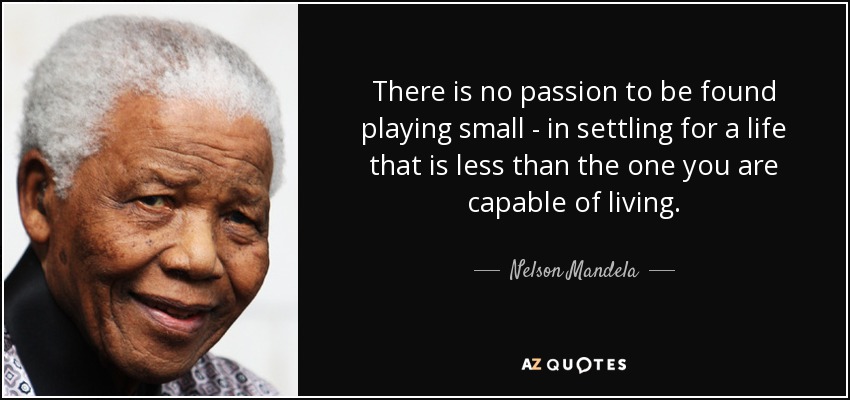
Purposeful Performance Principle 11: A meaningful cause in service to others inspires team members to fully commit to mission accomplishment.
Teams not only need to be good, they need to be good for something. Furthermore, individuals respond to the inspiration of serving a cause greater than themselves.
A service-before-self mindset developed internally will manifest itself externally in positive customer and stakeholder relationships. Having a mission that truly matters requires service to others.
A team with a healthy, positive, mission-oriented culture generates aspirational vigor. Vigor implies strength and health; aspirational implies growing and stretching. Meaningful purpose drives that healthy, energetic stretching and infuses the team with power to go get the job done. Execution is, after all, about doing, and energetic, inspired people accomplish far more of value than those passive, uncommitted souls who can’t ever seem to make things happen.
–CUE CARD– MAKE THE MISSION MATTER
Result: A meaningful mission drives deep commitment to executing well.
Team Benefit: A mission that matters of service to others energizes and focuses team members.
8 Take your mission very seriously, but not yourself.
7 A Mission that Matters requires service to others.
6 Step out of individual comfort zones and expertise areas to expand your ability to contribute to the overall team effort.
5 Seek meaningfulness. Turn your adventures into ventures and vice versa.
4 Couple high energy with focused performance. Both are required for effective execution.
3 Enthusiasm is contagious. Fortune doubly smiles on the boldly passionate.
2 Passion is really a reflection of intense commitment. It can run quiet and deep, just as well as loud and animated.
1 Purpose-derived passion gives a team powerful aspirational vigor to energetically get the work done and accomplish the mission.
Spaceflight Metaphor: Purpose with passion lights the fire to launch the team on their way.
4P #2 – People: The Who
People comprise the most crucial component of the 4P model.
Leaders should see their role as the prime enabler for the people in their organization to get the work done that will fulfill the mission.
Purposeful Performance Principle 10: Work the Matrix
“I’m trying to free your mind, Neo. But I can only show you the door. You’re the one that has to walk through it.” —Morpheus, in The Matrix
Purposeful Performance Principle 10: Constant care of the matrix of both internal and external relationships amplifies team unity and leverages effective collaboration.
The matrix consists of nodes (the individuals) all connected through the links (the interrelationships). When the matrix is whole and strong, the team can act together to do the right things that lead to excellent execution.
You may not have the door-opening advantage of the astronaut flight suit as you make your rounds. Nevertheless, you and everyone on your team can still harness the power of mutual recognition and strengthening. If you are a leader, whether designated or not, take the time and make the effort for frequent, informal visits out where the work gets done. All it takes is a little bit of sensitivity and effort. The emails and action items will always be there, but the opportunities for the personal magic moments of human interaction may not.
Even with the best of intentions, indirect communications can lead to inaccuracies, rumor generation, and potentially hard feelings. Assuming everyone on the team is of goodwill, it still produces problems.
Links are strengthened during common action. Joint effort and achievement produce a virtuous cycle. Through common action, relationships strengthen and team members desire to accomplish still more together. Execution accomplishment feeds back to team development, which in turn spurs even crisper future execution.
Virtual teams can act effectively too. Today’s superb information technologies leverage our team efforts magnificently. However, leaders guiding the most fully effective teams will always insist on a significant level of direct, face-to-face interaction and working together. Particularly early on in a team’s life cycle, the personal touch pays high dividends.
Pouring the Cohesion Glue: Unity
Taking care of people along with building strong links and communications frames up a team matrix well. The last thing is to add the glue that holds it all together. Then you have that tough, resilient team, much like the robust composite materials modern engineering produces.
Whether with your immediate team, other stakeholders, shareholders, or customers, Working the Matrix is a powerful tool. It will grow your people and unify your team. A cohesive team will pull together, exercising the unified action critical for proper execution.
-CUE CARD- WORK THE MATRIX
Result: Working the Matrix leverages effective collaboration to get better
Team Benefit: Sincere care tor individuals and relationships amplifies team unity.
Crew Notes for Business Execution:
8 “The matrix” is the set of all interrelationships within a team. Leaders must consider all the relationships and act to strengthen them.
7 Matrix nodes are individual team members. Building individuals up requires respect, recognition, strengthening, and training.
6 Respect recognizes the unique and important value of each person on the team, regardless of his or her role or experience level.
5 Recognition and strengthening should include formal programs and regular, informal acknowledgements of contributions.
4 Matrix links include all the formal and informal ways team members interact.
3 Links are strengthened via direct communications, face-to-face interactions, and conducting common actions, particularly when purposeful and including some element of risk.
2 Team cohesion requires strong nodes and links. Every single interaction within the team will either pour more cohesion glue or help dissolve it. Always work to enhance unity.
1 It’s not just a matrix, but a matrix to the nth power, including all the external links with stakeholders, customers, and other teams. Everyone must be aware of all these outside relationships and carefully shepherd them.
Spaceflight Example: Effective team performance on a human spaceflight mission can be a matter of life or death. Building the necessary bonds for team cohesion in such extreme environments takes attention and diligent work in advance.
Purposeful Performance Principle 9: Build Total Trust
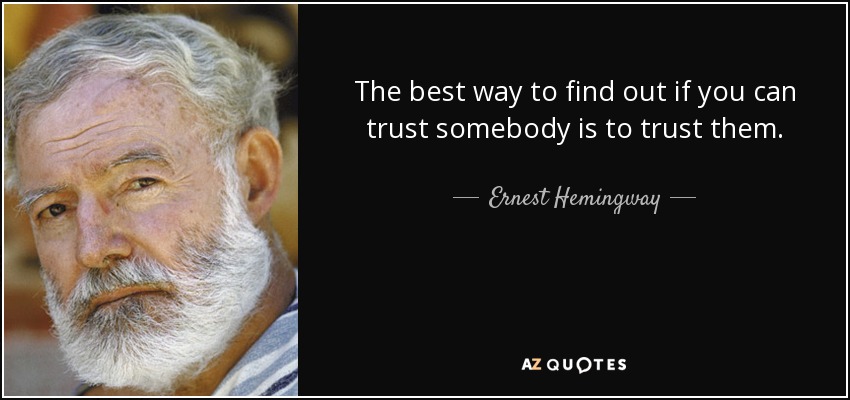
Purposeful Performance Principle 9: More than any single factor, a high-trust culture enables capturing people’s best efforts and contributions to meet the most challenging commitments.
A trust culture requires all team members—particularly leaders—to consciously choose to be trustworthy. Trustworthiness consists not only of irreproachable integrity, but also of reliable competence.
It takes directed effort to build a trust culture. Certain consciously applied techniques, coupled with an informal, genuinely right-minded way of being, synergistically build a high-trust culture. Make it your first-order team requirement, your prime directive.
The basics apply. Being reliable, responsible, solid, steady, sure, constant, steadfast, dependable, and more all matter. Each is a trustworthiness building block.
Even though every member of a team needs to strive for trustworthiness, one single member, the leader, constantly remains under the trust microscope. It is the Commander who sets the tone, so the leader must set the right tone and atmosphere for trust to flourish. It goes without saying that all aspects of his or her comportment, attitude, and even casual comments must consistently align with the highest integrity.
Leaders must model the way. Modeling the way includes, but goes beyond, maintaining high personal integrity. It requires showing utmost dedication to the mission and the team as an organization. The complementary second category of trust-building techniques requires the leader to practice capable humility.
Jack Welch, noted former CEO of General Electric, often exclaimed that he loved to hire people smarter than himself. Humbly acknowledging others’ strengths is the key first step to effective delegation, a form of capable humility. Delegation is at its core a placing of trust. Capably humble leaders listen proactively and carefully.
Fostering consensus expands the trusting communications pathways further. Perhaps almost counterintuitively, promoting frank, open discussions is what will lead to eventual consensus.
-CUE CARD- BUILD TOTAL TRUST
Result: A trust culture enables capturing the best contributions to meet difficult commitments.
Team Benefit: Absolute trust founded on leader trustworthiness is the single most important factor for team unity and ultimate performance.
Crew Notes for Business Execution:
9 The more difficult the tasks, the more compelling the need for the highest trust culture.
8 Absolute trust generates greater team confidence than any other quality or activity.
7 The first-order requirement for leaders is to direct conscious effort toward modeling and building the highest trust within the team.
6 Meeting the first-order requirement for a trust culture requires the zeroth-order individual commitment from each team member to be trustworthy.
5 Mistakes are forgivable, but willfully violating trust is not. You must find a way to purge those who violate trust.
4 While all team members need to be trustworthy, the commander sets the tone and so must hold to the very strictest standards while constantly communicating the highest valuation of integrity and competence.
3 Capable humility amplifies the trust-building effect of integrity. It requires adept competence, careful listening, fostering consensus, and forgiveness of honest mistakes.
2 A Check-Six mutual support and backup mentality is a key cultural attribute of high-trust, effectively executing teams.
1 The dream crew is not the one doing the most glamorous work, but the one whose members could trust their lives to one another.
Spaceflight Example: Astronauts literally trust their lives to one another, over and over, in every flight phase.
4P #3 – Perspective: The How
We need to convert the fancy words of vision and mission statements, plans, and goal and objective lists into internalized ways of thinking and being. Perspective helps us make that conversion.
When it comes to purpose-powered execution excellence, maintaining balance in thought and action and keeping operations in line with values-driven principles are powerful keys.
Humor, breaks, reenergizing the team, fitness, resilience, and realistic optimism contribute too. Balance is reflected daily in outlook and attitudes that invariably will feed into tangible results.
Purposeful Performance Principle 8: Balance the Orbit
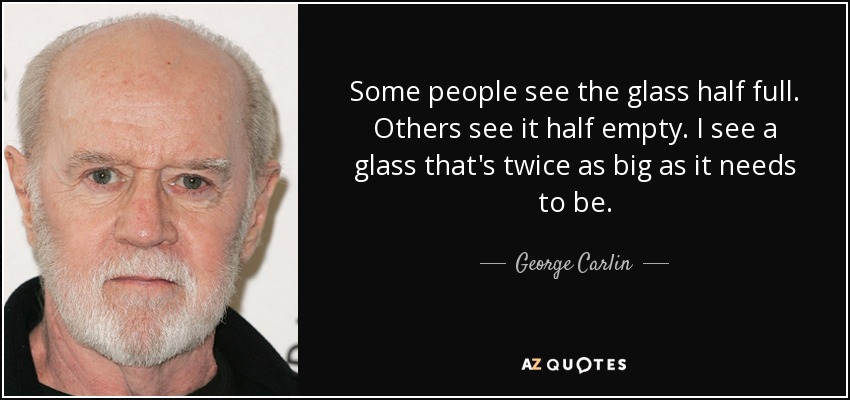
Purposeful Performance Principle 8: A positive yet reality-grounded perspective sets the stage for highest team member engagement, productivity, and results.
Leaders with balanced perspectives set the right tone through modeling the correct mix of humor, resiliency, and stress relief.
From the perspective of space, you can see how we are all in it together on this cosmic journey. Searfoss observed, “We were orbiting the sun with the other six billion people on the planet even while our spaceship, Columbia, whirled around Spaceship Earth.”
Building in Pressure-Relief Valves
The higher the stress your team is under, the more it needs to have just the right safety valves in place to deal with the pressure-packed environment.
For the Space Shuttle team, the first was simple: eat dinner together as a crew.
You can and should find a place for humor in any team setting. It’s a fantastic lubricant. It helps forge links and loosens up the team. Of course, jokes and humor need to be balanced and appropriate. Keep an eye out for the many opportunities to proactively create these types of interactions.
Your team members should not have to tiptoe around one another. Cultivate the “water off a duck’s back” approach. The ability to do this is primarily based on trust. Leaders should encourage attitudes that allow people the confidence to think well of themselves, but not get puffed up.
You will all make mistakes. You will suffer setbacks. You’re human; get over it! Everyone on your team is human; get over that too. But the great news about being human is that we humans are inherently adaptable. It’s perhaps our greatest strength.
Incorporate as much diversity of thought, experiences, and background within your team as possible. Such a balanced array within the team provides necessary foundational structure to then craft various backup protections within the team.
How does fitness tie into balancing your orbit? In the sense that it is an element of work/life balance that can improve energy levels brought into the workplace, it’s definitely of value.
Realistic, execution-focused optimism is always wiser than an “everything will work out fine, but I don’t have to do anything” hope. After all, hope is not a plan. If you consider the positive but passive view as silver-linings optimism, you must do better. Take it to the next level with a proactive and confident problem-solving viewpoint. I call that type of conscious and grounded confidence “golden-lining optimism.”
A balanced perspective requires your team to acknowledge that you will have setbacks and disappointments. It also encourages the golden-lining view that collectively you can and will vanquish them.
-CUE CARD- BALANCE THE ORBIT
Result: Balanced and grounded perspective gives the big picture view to enable adjustments and adaptability toward increased productivity.
Team Benefit: Seeking and prioritizing perspective sets the stage for the highest team-member engagement.
Crew Notes for Business Execution:
8 Balance in viewpoint, effort, and attitude within a team optimizes performance.
7 Attempt to keep the tone light and positive, even when dealing with serious team and project issues.
6 Proactively including humor and conscious breaks in the normal activity flow serves as a “pressure-relief valve” and is a wise investment of time and effort.
5 Life’s too short to die all tensed up. Cultivate among the team the ability not to take things personally.
4 Humans are naturally resilient. Amplify that quality in the team with backup approaches, allowing team control of as many aspects as possible, and maintaining a realistic view of challenges faced.
3 Encourage fitness and promote wellness. Individual and team productivity will benefit.
2 Don’t sugarcoat reality, but don’t let it scare you off either.
1 People who exercise “golden-linings” optimism realistically acknowledge the difficulties ahead, yet with a balanced perspective, confidently realize that they can diligently overcome the obstacles.
Spaceflight Example: Psychologists have coined the term “overview effect” after studies of astronauts’ and cosmonauts’ changed viewpoints from having seen the planet Earth from an off-world perspective.
Purposeful Performance Principle 7: Tether to Principles
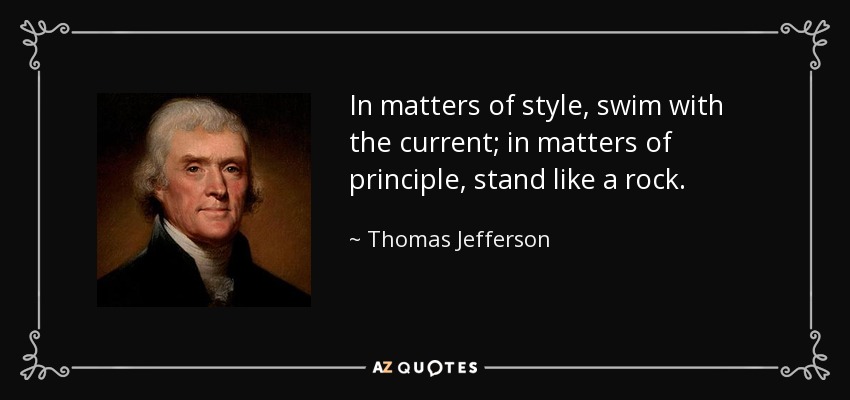
Purposeful Performance Principle 7: Adherence to values-based principles prevents drift and systematically keeps execution on track during preparation, action, and follow-through.
Leaders must follow and teach correct principles to avoid drifting away from mission accomplishment. Constant assessment, as guided by key principles, limits errors in strategy and tactical execution. It requires discipline, constant attention, and astute prioritization.
Regardless of how exciting or intoxicating the spacewalking experience is, it is always a critical, high-risk operation. For a safe and successful spacewalk, astronauts apply the principle of “tether protocol.” Tether protocol protects and gives confidence. Should you momentarily lose your grip, tethers limit drift. They anchor you to the structure and are potential lifesavers.
Establish Clear Rules of Team Behavior and Performance
Of all the factors that cause frustration and hinder execution within a team, the lack of clear expectations ranks among the worst. In fact, in polls of what makes a bad work environment, the majority of respondents consistently indicate that lack of clear direction produces the most dissatisfaction.
Don’t micromanage. Let your teammates astound you with competence and solutions. Legendary World War II leader General George S. Patton counseled, “Never tell people how to do things. Tell them what to do, and they will surprise you with their ingenuity.”
In every undertaking, place full reliance on the person at the front line with the direct observation and understanding of the situation. Help each other out, provide the backup and encouragement, but also let the line operators fully contribute. Give complete support and credit to the ones in the arena. Leaders, trust and back up your people.
Fess Up When You Mess Up
Mistakes are forgivable. Hiding them is not. We have to reinforce this principle constantly within the team.
Regardless of how high profile your team activities are, we all face the temptation to brush the dirt under the rug. Don’t do it! Momentary embarrassment is always less painful than when intentionally hidden lapses catch up to you and come out.
Leaders, constantly reinforce a learn-from-mistakes culture.
-CUE CARD- TETHER TO PRINCIPLES
Result: Adhering to principles prevents drift away from mission accomplishment.
Team Benefit: A principles-driven approach sets high standards and keeps the team on track during preparation, execution, and follow-up.
Crew Notes for Business Execution:
7 Tethering to principles protects, adds confidence, and limits effects of errors.
6 First principles incorporate foundational truths and key elements that will positively drive results.
5 Constantly prioritize and evaluate if the team is focused on the right thing, right now.
4 Establish clear rules of behavior and performance within the team. High standards with complete buy-in are hallmarks of effective teams.
3 Delegate and rely on each other. Value the on-scene individual.
2 Keep an open mind, as rivals can potentially become partners.
1 Freely admit mistakes. Never hide them. That’s not only a lost learning opportunity, but is also a trust killer when the story eventually comes out.
Spaceflight Metaphor: Spacewalking astronauts always keep one of their two tethers attached to the spacecraft to prevent drifting away and potentially dying. (less)
4P #4 – Program: The What, Where, and When
Execution counts; results matter. All other categories eventually lead to program.
Starting with a concept of Objective-Centric Operations, the six ensuing points follow the PAPA Effective Execution System: Preparation, Awareness, Persistence, and Accountability.
Purposeful Performance Principle 6: Create Objective-Centric Operations
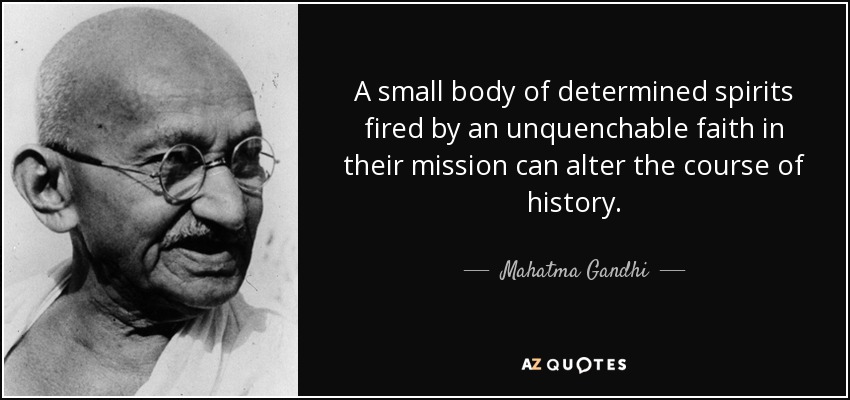
Purposeful Performance Principle 6: Achieving correctly defined, well-developed, and suitably emphasized objectives empowers the team to fulfill the mission, turning vision into reality.
Leaders must ensure prioritized achievement of the right objectives to lead to mission success.
In the early days of NASA, Dr. Goddard faced a number of critics. How did he react to the criticisms? He replied, “Every vision is a joke until the first man accomplishes it; once realized, it becomes commonplace.” Furthermore, the words from his high school valedictorian speech in 1904 proved prescient: “It is difficult to say what is impossible, for the dream of yesterday is the hope of today and the reality of tomorrow.”
Robert Goddard serves as a superb model for choosing to do hard things with a grand vision and pursuing them with an unquenchable sense of purpose. Goddard, certainly a dreamer and visionary, was also a practical doer. And his work really was rocket science, made all that more difficult because he pioneered the way as one of the very first in this esoteric field.
Consider Searfoss’ observation of hundreds of organizations: the more intellectual and emotional investment leaders and teams make in transferring high-level strategic concepts into actionable objectives, the better they create the conditions for ultimate success.
Searfoss even produced his favorite five areas for emphasis in objective development. As a space guy, he rolled them into the STARS acronym:
• Specific. The detailed “what.” Also the “where.” Sometimes guidance on the “how.” Make it concrete!
• Timelined. The “when.” Two elements of time matter. First, create a challenging deadline to build the sense of urgency and emphasize the importance of the objective, then lay out the schedule.
• Actionable and Accounted For. The “who.” State your objectives such that someone must actually do something.
• Realistic. The team needs to choose consistently challenging individual objectives. At the same time, though, rely on the team’s collective wisdom and expertise to define the boundaries of what is doable legally, morally, physically, and financially.
• Sensed. As in measured, numbered, or counted.
–CUE CARD– CREATE OBJECTIVE-CENTRIC OPERATIONS
Result: Defining suitable objectives transitions strategy to tactics to turn vision into reality in fulfilling the mission.
Team Benefit: Clear objectives empower the team to meet its purpose.
Crew Notes for Business Execution:
7 A vision is at best a dream, at worst a joke, until someone actually accomplishes it.
6 The trajectory from dreams and hopes to reality requires carefully crafted, focused, and pertinent goals and objectives.
5 Goals and objectives both address the “wheres, hows, whens, and whats.” Objectives, however, are more specific and data-driven than goals.
4 STARS Objectives: Specific, Timelined, Actionable and Accounted for, Realistic, and Sensed.
3 Consider also the crucial, but not direct, support objectives.
2 The designated leader must constantly prioritize, weigh goals and objectives against one another, and encourage everyone on the team to contribute to that effort.
1 Concentrate on establishing clear, focused objectives. Maintain the discipline to stick to them and to defend against distractions.
Spaceflight Metaphor: Progress toward objectives mirrors the trajectory after launch–onward and upward toward rendezvous with targets and success.
Purposeful Performance Principle 5: Pace It Perfectly

Purposeful Performance Principle 5: Pushing ahead diligently, with a long-range view, opportunities orientation, and optimal pace, fosters the responsiveness to stay ahead of problems and competitors.
In team execution, the long range works its way down progressively to smaller chunks of time of prime concern.
Objectives serve as regular reminders of where the team needs to head, allowing current actions to align with the high-level vision, mission, and goals. A key execution leadership function is to remind people continually of those objectives.
Winston Churchill said, “The farther back you can look, the farther forward you are likely to see.”
When you’re exploring and researching where no one has done something before, you absolutely must start with an open mind. Get the team comfortable with uncertainty. Embrace the unknown. Explore various idea pathways in the initial idea development brainstorming process. Early, nonjudgmental presentation and discussion of ideas is a valuable process.
Unearthing the core issue or “mission relation” will help you get out ahead of your challenges, carving out more time and brain space to solve them. Try it out. Do your own test flight of the “So what?” question with whatever’s vexing your team. It will serve you well.
Often, you have to slow down to speed up. Mindful, purposeful progress consistently pursued beats sprinting, followed by gasping inactivity, almost every time.
–CUE CARD– PACE IT PERFECTLY
Result: Pushing ahead diligently maintains positive progress to stay ahead of problems and competitors.
Team Benefit: Perfect pace fosters team creativity and generates an opportunities orientation.
Crew Notes for Business Execution:
7 Total focus and excellent pacing does not happen by accident.
6 Drive toward highly anticipatory outlooks with a long-range view. Simultaneously evaluate and learn from the lessons of the past.
5 In reality, there are no true quick fixes. Even while working quickly and efficiently, recognize that there are no shortcuts to doing the job right.
4 Start with messy ideas, then massage, develop, and rework them into operationally useful solutions.
3 Look at everything with an opportunities orientation that then grows to develop a team abundance mentality.
2 Constantly ask the “So what?” question. What’s the relevance; why does it matter; how will it affect the outcome with respect to meeting objectives?
1 Pace yourself and the team. There’s a fine line between maximum performance and being out-of-control. The intent should always be to optimize overall performance.
Spaceflight Example: Landing the space shuttle is one of the most critical, fastpaced team operations possible, enabled through the right preparation, training, and attitudes.
Purposeful Performance Principle 4: Prepare Diligently and Constantly
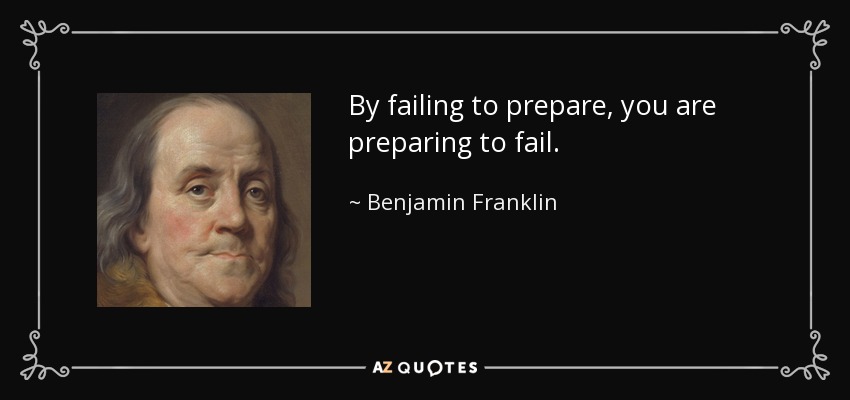
Purposeful Performance Principle 4: Deep preparation and guarding against complacency in planning, training, and briefing accelerate the team into effective action.
Relentless preparation lays the foundation for all actions that will produce successful execution. Leaders must constantly fight organizational complacency and inspire team members to prepare continually.
All the preliminaries—vision, mission, building the team trust and competence, identifying clear objectives—provide groundwork. With that foundation, then the further detailed team preparation for execution can begin in earnest.
General Dwight D. Eisenhower, supreme commander and architect of D-Day during World War II, testified, “Plans are nothing; planning is everything.” The very exercise of considering all the necessary planning elements, even for the smallest of activities, points you toward success.
Searfoss pointed out, “It’s been my observation of hundreds of organizations in many industries that the closer you get to the operational team level, the less emphasis is placed on a planning mentality.”
For regular operational planning, here is a straightforward, five-step planning framework using another STARS acronym:
• Scenario. Get everyone’s head around what they’re facing, whether large and comprehensive, like an annual sales target planning drill, or small and simple, like a schedule of the day’s activities.
• Tasks. Tasks flow from objectives. What are specific action items you must do within the available time?
• Assess. Assess what? Primarily focus on the items that will hinder your objective accomplishment.
• Resources. Resource consideration involves stacking up what you have available to meet the objective. People, equipment, funds, and other tangible resources typically come to mind first. Also, pay attention to intangibles, such as knowledge, brand strength, goodwill, and intellectual property.
• Steps. What specific sequence of actions do you take?
Regardless of the industry, your team needs to develop a briefing mindset. Depending on the scope and scale of any of your team’s particular operations, a briefing may be formal, extensive, and lengthy. Or, it may just as easily be a quick reminder chat between two teammates about some of the planned activities for the morning.
Leaders need to highly prioritize effective meetings and briefings. Conduct them yourself or delegate this task within the team.
In Time Enough for Love, the great classic science fiction author Robert Heinlein wrote, “A human being should be able to change a diaper, plan an invasion, butcher a hog, conn a ship, design a building, write a sonnet, balance accounts, build a wall, set a bone, comfort the dying, take orders, give orders, cooperate, act alone, solve equations, analyze a new problem, pitch manure, program a computer, cook a tasty meal, fight efficiently, die gallantly. Specialization is for insects.”
–CUE CARD– PREPARE DILIGENTLY AND CONSTANTLY
Result: Constant preparation through planning, training, and team communications sets the stage for focused pursuit of objectives.
Team Benefit: Diligence up front accelerates the team’s ability to actively produce positive outcomes and fight off complacency.
Crew Notes for Business Execution:
7 When you first think you’re ready, you’re not. Plan and replan. Leave no stone unturned. Rehearse and practice.
6 Actively plan through the second STARS method: Scenario, Tasks, Assess, Resources, and Steps.
5 Effective, business-relevant preparation uses skills-based training supplemented with correct mental ideation.
4 Communications should follow the C4 pattern: Clear, Complete, Concise, Concrete.
3 Incorporate dedicated briefings, also using the STARS pattern, to align planning with team communications. Great briefings set an action-oriented tone and build the right communicative culture.
2 Team members should not only master their own specialized roles, but have sufficient cross-training and broad expertise to effectively back up others.
1 Complacency kills. In your preparation and execution, constantly question, adapt, and never settle for the status quo. Even if it’s good enough today, it won’t be tomorrow.
Spaceflight Example: On launch day, you absolutely must be 100 percent ready for every planned action, possible emergency procedure, and “unknown unknown.” Your life depends on it.
Purposeful Performance Principle 3: Drive Awareness and Learning
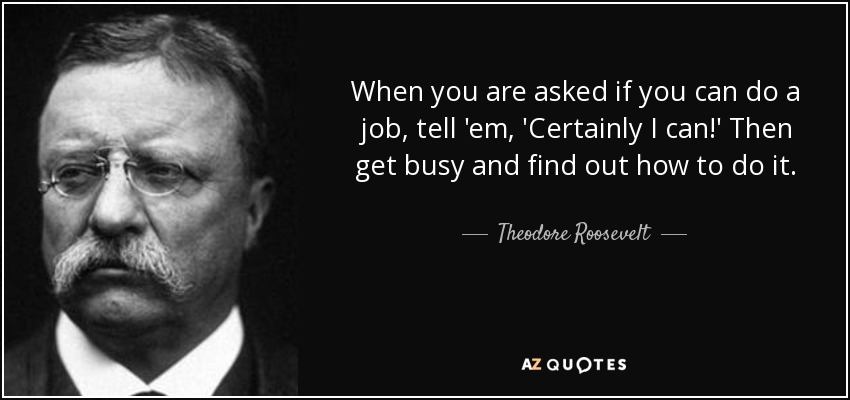
Purposeful Performance Principle 3: Peak productivity takes superb knowledge and competence, strong situational awareness, and a relentless drive to improve.
Constantly questioning, learning, and expanding skills marks high-performing leaders and teams.
Leaders should provide as many formal training opportunities for their teams as possible, again keeping in mind that training needs to be relevant and timely. Beyond book learning, team members need to earnestly practice skills, both technical and interpersonal.
Astronauts’ learning and training processes subject them to as many off-nominal situations in as high-fidelity simulations as possible. Over time, this process creates a huge reservoir of mental scripts and experiences from which to draw. A human spaceflight crew has to be a nonstop learning, doing, and mental modeling team. Your team too can benefit from the same approach. The stronger the learning culture is, the more your team will incorporate vicarious and actual experiences to deal with your particular challenges and opportunities.
Here are three situational awareness tips, which can be helpful:
1. Simply pay attention to the baseline within your team, company, and industry. Make the effort to stay current. Read widely, focusing on the trends that will impact your business.
2. Avoid normalcy bias. None of us like to consider unpleasant situations or, in the worst case, disaster scenarios. Normalcy bias is the human tendency to assume that since a given really bad thing hasn’t yet happened, it won’t. Practice the “what if” questioning.
3. Keep scanning. A good pilot constantly maintains a rapid yet accurate crosscheck of myriads of instruments, wingmen positions, threats, target, navigation, and the like. Teams should do likewise. Fight against tunnel vision, or locking your focus onto any one particular issue at the exclusion of other important elements.
Iterating to improve requires finding and fixing mistakes. Often the leader must humbly acknowledge his or her own shortcomings.
Leonardo da Vinci, with arguably the most sophisticated human mind ever, noted, “Simplicity is the ultimate sophistication.” Da Vinci’s simple sophistication is the refined and polished result of finding the optimum way of doing anything.
Operational innovation, finding ways to get the job done better on the front line, is typically the product of 1,001 little “ahas” among line personnel, uncovered in the midst of straightforward problem solving. Simplicity rules.
–CUE CARD– DRIVE AWARENESS AND LEARNING
Result: Learning builds competence, while awareness protects and amplifies it.
Team Benefit: Continuous learning leads to increased confidence and satisfaction in expanded team capabilities.
Crew Notes for Business Execution:
8 Relentlessly promote discovery, curiosity, questioning, and learning.
7 A Learning-Plus team with a culture of expanding pertinent knowledge and practical skills adapts more quickly, operates with greater confidence, and can engage in more effective objective-oriented activity.
6 Mental simulations, rehearsals, and joint reviews of work scenarios provide a powerful supplement to formal training and book learning.
5 Strive for vigilant team situational awareness of the baseline and what may be “off-nominal.” Always keep scanning.
4 Constantly iterate to improve. Team members should actively seek to make every aspect of team structure and action better.
3 Everyone, but particularly designated leaders, should humbly acknowledge their own mistakes while offering ideas to fix the shortcomings. Mistake-driven learning, if pursued with commitment to improve, is extremely effective in a team setting.
2 The larger the organization, the more difficult to build comprehensive mistake-trapping processes. Nevertheless, everyone should keep pushing such processes throughout the team and the broader organization.
1 Strive for elegant and simple—but not simplistic—solutions.
Spaceflight Metaphor: Continually improving is like an orbital rendezvous. It requires navigation (knowing where you are), guidance (seeing the path forward toward the target), and control (taking the right competency-enabled actions to get there).
Purposeful Performance Principle 2: Persist to Prevail
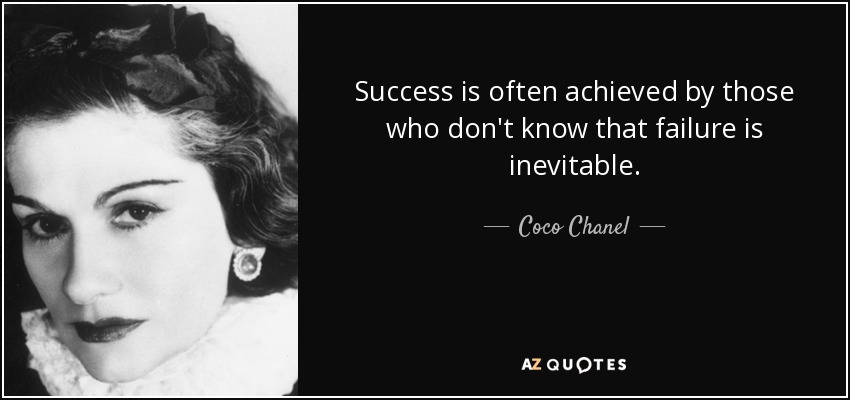
Purposeful Performance Principle 2: Leading all the way to successful completion requires tenacious persistence, acting in alignment with objectives, wisely mitigating risks, and patiently adjusting operations.
Leaders need to demonstrate wise and patient persistence toward accomplishing mission objectives. If they build a robust culture of diligent, steady improvement, their team will overcome the most difficult obstacles.
Dr. Peter Diamandis, regarded as a foremost futurist and thought leader following the 2012 publication of his New York Times bestseller Abundance: The Future Is Better than You Think, had a series of “Peter’s Laws.” Searfoss’ favorite one was this: “The best way to predict the future is to create it.”
Consider, “Never give up. Never, ever give up.” Short speech. Great man. Winston Churchill gave this speech to the US Congress right after World War II. He was a headstrong man who lived that maxim. With stubborn determination, he and his nation held on and persevered through the darkest hours.
Teams need to operate with an underlying tenacious mindset. Leaders must model firm resolution constantly.
Go to MARS in the heat of actual execution:
Mindset. Persistence takes energy and determination. The team needs to value an energetic pace to stay on top of challenges. In his insightful book The Acorn Principle, noted business and sales expert Jim Cathcart perceptively counsels individuals to come to understand their own “optimum personal velocity.” He explains the velocity concept, unsurprisingly, not as an engineer would, but as the self-development authority he is. For an individual, your personal velocity is the “combination of your energy patterns and your drive.” An axiom from instrument flying is “attitude determines altitude.” How you set your orientation, or pitch angle, coupled with airplane performance from speed and throttle setting, will determine where in the sky the airplane ends up. It’s the exact same way with our teams.
Act Aligned. With a cohesive team and the right initial velocity vector, you’re headed off the launch pad perfectly. The team has to constantly work at rapidly fixing issues and shortfalls that inevitably will arise. Acting aligned is the balancing of every element within execution to stay pointed toward objectives at the center of the PAPA orbital system.
Risk Mitigate, Real Time. Hopefully in the preparation phases you’ve carefully, with a disciplined process, evaluated all the risks to your operation your team could possibly envision. Nevertheless, in the real world, unknown risks still lurk. You must expect the unexpected. This process also needs to happen constantly. Buoyed with strong situational awareness, the team will anticipate and quickly perceive when new risks arise or old ones flare up with more potency.
Steps, Again. The least dramatic of execution persistence skills, this phase begins with constantly comparing the process steps you’re taking with what you had planned. Verify alignment with the steps you’ve developed in the planning process and then fully brief everyone. Change those steps as necessary. Your plan may be awesome, but it still needs to evolve real time. Helmuth von Moltke, a Prussian field marshal in the mid-nineteenth century, counseled, “No plan survives first contact with the enemy.”
–CUE CARD– PERSIST TO PREVAIL
Result: Objective-aligned persistence empowers execution all the way through completion without falling short.
Team Benefit: Tenacious leaders strengthen team will and attitude of ownership.
Crew Notes for Business Execution:
9 Preparation and awareness provide the capability, and persistence gives the will to execute all the way to successful completion.
8 Stubborn determination and never giving up is most, but not all, that persistence requires.
7 Always keep the desired end state in mind so that, if necessary, you can adjust the path and the waypoint objectives to get there.
6 A four-part format, MARS, for Mindset, Adjust to Act Aligned, Risk Mitigate, and Steps, will guide actions to reinforce persistent, corrective progress.
5 Mindset requires leaders decisively demonstrate a sense of urgency to fix issues while all team members support and grow that attitude.
4 An effective team velocity vector consists of the optimum magnitude of unified willpower headed in a continually realigned direction.
3 Acting aligned requires constant, rapid, and precise adjustments to stay close to our desired course toward objectives.
2 Expect the unexpected to mitigate risks real time. Cultivate “downside sensitivity,” an important component of situational awareness.
1 Constantly compare execution steps and workflow with those planned and briefed. Continually refine, replan, and adjust the process steps as needed.
Spaceflight Metaphor: Steering a rocket through tilting its engines keeps the flight path aligned with the desired trajectory. The constant and precise corrections model the persistent alignment concepts teams should use during execution.
Purposeful Performance Principle 1: Propel Accountability for Results
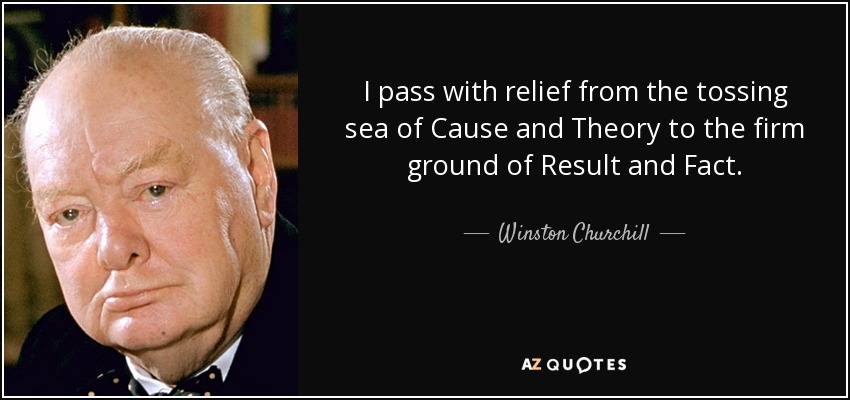
Purposeful Performance Principle 1: Execution excellence demands total accountability, principled adaptability, and a disciplined debriefing mindset.
Leaders should build a team ethos of voluntary, no-excuse accountability for all results.
A disciplined execution communication and debriefing mindset powerfully promotes an accountability culture.
Anyone, to perform at the very highest level, must resolutely hold themselves accountable for results and continuous improvement. Trials and difficulties are inevitable. Emergencies, or as NASA euphemistically calls them, “off-nominal situations,” happen. True leaders always set the example of how to deal with such challenges.
Within any team, multiple levels of group and individual accountability exist. Laws, ethical standards, and regulatory impositions make us answerable on one level. Company policies determine another set of standards.
The two main areas of near real-time accountability are shared group accountability and individuals answering to each other for their own work.
Don’t assume you’re there until past the finish line, still striding strong the whole way. The leader’s role, with ideally every team member supporting, is to model how to be a finisher. Close the loop with accountability for results.
To celebrate the small wins, cultivate a fun-seeking attitude.
We have hundreds of metrics in business to measure the results for which we are accountable, in virtually every area imaginable. Do we have an internal metric for gauging the fun level—not purposeless, idle amusement, but the gratifying fun of steady progress with our team?
Internally, it is virtually impossible to over-communicate the elements of vision, purpose, mission, and especially goals and objectives to the team, even while everyone is cranking out the work. Regular promptings are helpful. Written reminders, clearly visible, make a lot of sense.
Team communication during execution with external customers or stakeholders absolutely requires alignment with team purpose and objectives. Every organization should speak in unison.
Debriefing well gives a powerful boost to accountable, results-driven execution. Because time is money and we’re always in a hurry to rush into the next activity, we neglect to close that loop. Simply put, debriefing makes you better, often with nearly as much impact as practicing the operation itself. The main reasons to hold debriefings are to capture learning, share best practices, promote accountability, and invigorate execution follow-through.
Remember to come back down to EARTH for well-grounded, productive debriefings:
Execution. The “what.” Compare what actually transpired to the objective. Objective-centric, remember?
Accountability. The “why and who.” The key in frank discussions of accountability is to start with considering the systemic or organizational whys of any shortcomings. Keep it data driven and fact intensive. Think systems and processes. Wrap up accountability discussions with assigning one or more individuals further responsibility to fix specific issues. Few examples are stronger than when a leader also accepts any deserved blame contritely and commits publicly to do better.
Review. The “how.” Review process and procedure details. Optimizing future performance relies on full understanding, discussion, and improvement of process details.
Timeline (and Timely). The “when.” Go over the time dimension of the entire execution package you’re debriefing. Time’s always a valuable resource. Was any wasted?
Highlight. Summarize the key lessons learned. Identify where the written record will reside for everyone’s reference.
–CUE CARD– PROPEL ACCOUNTABILITY FOR RESULTS
Result: Accountability closes the loop of all execution activities to ensure the team meets objectives.
Team Benefit: Team members earn the gratification and tangible benefits that come from executing all the way to mission success.
Crew Notes for Business Execution:
8 A real-time, honest, shared-accountability culture, where all team members willingly stand up and eagerly accept responsibility, is a powerful multiplier of team efforts.
7 Be a finisher! Check, recheck, validate, trust but verify, and follow up with all your people, all the time, to close the accountability loop.
6 Principled adaptability, accountable to objectives and values, spurs wise changes. It trumps waffling, indecisive flexibility every time.
5 Leaders, hold yourself accountable to cultivate informal “fun metrics” to celebrate the progress and small wins along the way and thus reward and inspire your team.
4 It’s virtually impossible to over-communicate aspects of vision, purpose, mission, and especially objectives to the team, even while everyone is cranking out the work.
3 Effective communications provide the ongoing feedback to measure accountability for results and drive unity of action.
2 Investing the time and effort to conduct formal debriefings will make you better and may have nearly as much positive impact on long-term execution success as the operation itself.
1 The down-to-EARTH debriefing covers Execution (what), Accountability (why and who), Review of the operation (how), Timeline (when), and Highlights.
Spaceflight Example: Surviving the only space shuttle ascent hydraulic failure required the will to prepare persistently and acceptance of accountability for the lives of others, resulting in the necessary level of high-awareness for perfect execution.
Summary of Liftoff to Success
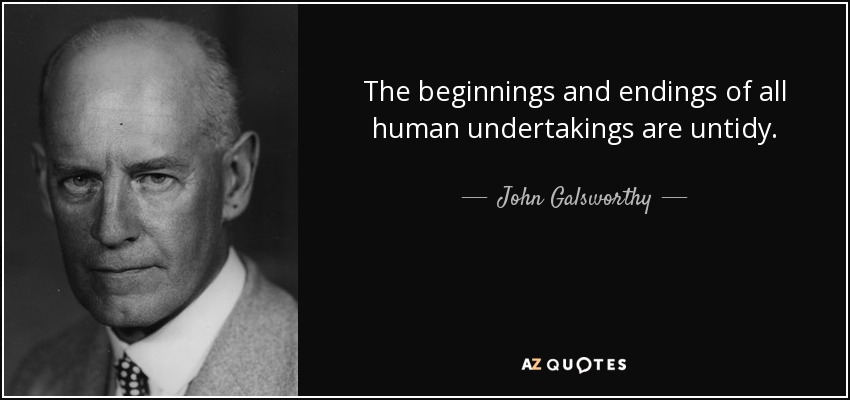
Purposeful Performance Principles within Purpose, People, Perspective, and Program converge not just to build a team, but also to yield productive, mission-accomplishing real work from the team. Effective execution follows from focusing on objectives at the right pace while employing principles of Preparation, Awareness, Persistence, and Accountability.
Purpose: The Why
The team must ask of itself guiding star questions: “What is our desired end state? What is our overriding, highest priority purpose? What mission will fulfilling that purpose serve?” Right at the start, a Choose the Hard mentality informs that entire questioning process.
A Mission that Matters of service to others further cements the teambinding power of striving to overcome tough challenges. Deep engagement demands taking the work, but not yourself, very seriously.
People: The Who
People make or break any venture.
Truly effective teamwork embraces the people connections to all the other elements. People connect and bind throughout all the four Ps.
The bottom line: people are the team! People cover for all the shortfalls everywhere else. Nothing gets conceived, nothing gets planned, and nothing gets done without the gems of the people on the team making it so.
Perspective: The How
Balanced, big-picture perspective should surround every concept, plan, and activity of the team. The abilities required to alternate between seeing the forest and each individual tree enable adjustments and improved productivity through adaptability. Overall effectiveness requires balance.
Program: The What, Where, and When
Program, process, procedures, or any number of other words describe the movement, action, and execution the team must complete to achieve success. Program means getting the work in teamwork done. All other 4P elements lead to program, producing activity that leads to pertinent results. The “fatherhood” of program resides in PAPA: Preparation, Awareness, Persistence, and Accountability.
Pace matters. Diligent, positive progress daily, while keeping the long-range view in mind too, enables the team to stay ahead of circumstances and the competition.
The process to reach and maintain peak performance is far from easy. It takes effort, imagination, and a willingness to remain constantly on guard. Diligent preparation produces confident competence to counter the mediocrity of complacency.
Teamwork and leadership intersect and mutually support one another. Enlightened leaders encourage and empower teams. In turn, effective teams serve to nurture and develop powerful leaders.
Your best opportunities to grow professionally, then to influence more expansively, and ultimately to produce impactful results, will come in team settings. Seek them out; engage enthusiastically whether as the newest rookie or seasoned veteran.
Like Dr. Goddard, take your dreams from hopes to reality.
Searfoss concludes, “I wish you the very best for magnificent team triumphs in the purposeful pursuit of effective business execution.”














